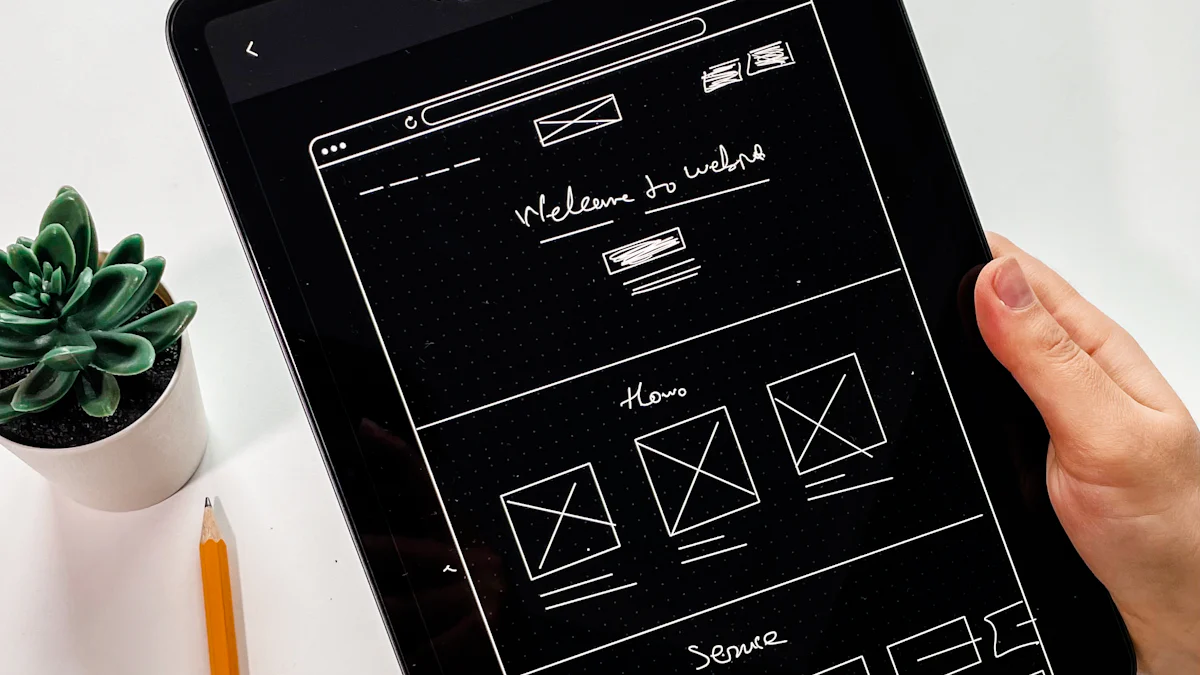What Is Omnichannel Customer Service Software

Omnichannel customer service software serves as a unified platform that connects multiple communication channels, ensuring a seamless experience for your customers. It allows you to interact with them through their preferred channels—email, chat, social media, or phone—without any disruptions. Studies reveal that businesses using omnichannel strategies retain 89% of their customers, compared to just 33% for those without. This approach not only enhances customer satisfaction but also boosts operational efficiency. For instance, companies like Tesco have achieved a 20% improvement in customer satisfaction by adopting this strategy. Platforms like Sobot simplify this integration, enabling you to deliver consistent and personalized support across all touchpoints.
Key Takeaways
- Omnichannel customer service software connects multiple communication channels, providing a seamless experience for customers and enhancing satisfaction.
- Businesses using omnichannel strategies retain 89% of their customers, significantly higher than the 33% retention rate of those using multichannel systems.
- Real-time data synchronization allows for consistent and personalized support, ensuring that customer interactions are smooth and contextually relevant.
- Centralized platforms streamline workflows, reduce response times, and improve operational efficiency, leading to a 30% increase in customer satisfaction.
- Implementing omnichannel solutions like Sobot can transform customer service by integrating various tools and providing actionable insights through advanced analytics.
- Training your team on the software is crucial for success, as well as continuously monitoring performance to adapt and improve customer service strategies.
What Is Omnichannel Customer Service Software?
Definition and Core Features
Unified communication across multiple channels
Omnichannel customer service software enables you to connect with customers through various channels like email, chat, social media, and phone. Unlike traditional systems, it unifies these channels into a single platform, ensuring that every interaction feels seamless. For example, if a customer starts a conversation on social media and later switches to email, the software keeps the context intact. This unified approach eliminates the frustration of repeating information and enhances the overall customer experience. Businesses using such software often see higher satisfaction rates because customers feel valued and understood.
Real-time data synchronization for seamless interactions
Real-time data synchronization is a cornerstone of omnichannel customer service software. It ensures that all customer interactions and updates are instantly reflected across channels. For instance, if a customer updates their contact information during a phone call, the system automatically syncs this data across all platforms. This feature not only saves time but also reduces errors. Tools like Sobot excel in this area by integrating with CRMs and other essential systems, allowing you to deliver consistent and accurate support. According to a G2 review, Sobot's real-time synchronization has significantly improved service quality for many businesses.
How Omnichannel Software Works
Centralized platform for managing customer interactions
Omnichannel customer service software operates through a centralized platform that consolidates all customer interactions. This means you can manage conversations from different channels in one place, streamlining your workflow. For example, instead of juggling between separate tools for email, chat, and social media, you can handle everything within a single dashboard. This centralization not only boosts efficiency but also ensures that no customer query slips through the cracks. Platforms like Sobot simplify this process by offering an intuitive interface that makes managing interactions effortless.
Integration with CRM and other tools for consistency
Integration with CRM systems and other tools is another critical feature of omnichannel customer service software. This integration allows you to access customer history, preferences, and past interactions in real-time, enabling personalized support. For example, if a customer has previously reported an issue, the software provides this information upfront, helping you address their concerns more effectively. Sobot stands out in this aspect by seamlessly integrating with popular CRMs and project management tools. This ensures that your team has all the necessary information at their fingertips, leading to faster resolutions and happier customers.
Omnichannel vs. Multichannel Customer Service
Key Characteristics of Multichannel Customer Service
Multiple communication channels without integration
Multichannel customer service provides several ways for customers to reach you, such as email, phone, or social media. However, these channels often operate independently. For example, if a customer contacts you via email and later switches to chat, the context of their previous interaction may not carry over. This lack of integration can lead to fragmented experiences, leaving customers frustrated. Businesses using multichannel systems may struggle to maintain consistency, as each channel functions in isolation. While this approach offers flexibility, it falls short in delivering a cohesive customer journey.
Challenges of siloed customer interactions
Siloed interactions are a common issue in multichannel customer service. When channels don’t communicate with each other, your team may lack access to a customer’s full history. This can result in repetitive questions and slower resolutions. For instance, a customer might explain their issue on one platform, only to repeat it when switching to another. Such inefficiencies can harm customer satisfaction and reduce loyalty. Without a unified system, businesses risk losing valuable insights that could improve service quality. Addressing these challenges requires a shift toward integrated solutions like omnichannel customer service software.
How Omnichannel Customer Service Stands Out
Unified customer journey across all touchpoints
Omnichannel customer service ensures a seamless experience by connecting all communication channels into one unified platform. Unlike multichannel systems, it allows you to maintain context across touchpoints. For example, if a customer starts a conversation on social media and continues it via phone, the system retains all previous interactions. This interconnected approach eliminates the need for customers to repeat themselves, saving time and enhancing satisfaction. Businesses adopting omnichannel strategies often see improved retention rates, as customers appreciate the consistent and personalized support.
Enhanced personalization and customer satisfaction
Omnichannel customer service software empowers you to deliver tailored experiences. By integrating with tools like CRMs, it provides real-time access to customer data, including preferences and past interactions. This enables your team to offer solutions that feel personal and relevant. For instance, if a customer frequently purchases a specific product, the system can suggest complementary items during their next interaction. Such personalization fosters trust and loyalty. Platforms like Sobot excel in this area, offering advanced features that help businesses create meaningful connections with their customers.
Benefits of Omnichannel Customer Service Software

Improved Customer Experience
Seamless transitions between channels
Omnichannel customer service software ensures smooth transitions for your customers across various communication channels. Whether they start a conversation on social media and continue it via email or switch from chat to phone, the context remains intact. This eliminates the need for customers to repeat themselves, saving time and reducing frustration. Businesses that adopt this approach report a 30% increase in customer satisfaction. By providing a unified experience, you can make every interaction feel effortless and cohesive, which strengthens customer trust and loyalty. seamless transitions
Faster and more personalized support
With omnichannel customer service software, you can deliver faster and more tailored support. The system integrates with tools like CRMs to provide real-time access to customer data, including preferences and past interactions. This allows your team to address issues quickly and offer solutions that feel personal. For example, if a customer frequently purchases a specific product, the software can suggest related items during their next inquiry. Companies using this strategy experience 23% higher engagement rates, proving that personalization drives better outcomes.
Operational Efficiency for Businesses
Centralized data for better decision-making
A centralized platform is a game-changer for businesses. Omnichannel customer service software consolidates all customer interactions and data into one place, making it easier for you to analyze trends and make informed decisions. For instance, you can identify common pain points and adjust your strategies accordingly. Companies with strong omnichannel strategies report a *9.5% year-over-year increase in annual revenue*, showcasing how better data management leads to tangible results. Tools like Sobot excel in providing these insights, helping you optimize both customer service and business operations.
Streamlined workflows and reduced response times
Managing multiple channels through a single platform streamlines your workflows. Your team can handle inquiries more efficiently without switching between tools, which reduces response times. Faster resolutions not only improve customer satisfaction but also enhance team productivity. Businesses that implement omnichannel solutions report a 30% improvement in customer satisfaction. By adopting platforms like Sobot, you can ensure that your team operates at peak efficiency while delivering exceptional service.
Increased Customer Retention and Loyalty
Consistent and proactive customer engagement
Consistency is key to retaining customers. Omnichannel customer service software enables you to engage with customers proactively and consistently across all touchpoints. For example, you can send follow-up messages after resolving an issue or recommend products based on their purchase history. Companies with robust omnichannel strategies retain 89% of their customers, compared to just 33% for those with weak approaches. This proactive engagement builds stronger relationships and keeps customers coming back.
Building trust through reliable service
Reliability fosters trust, and omnichannel customer service software helps you achieve that. By maintaining accurate records and providing seamless support, you show customers that you value their time and needs. Studies reveal that businesses using omnichannel strategies see 91% higher year-over-year customer retention rates. Platforms like Sobot empower you to deliver consistent and reliable service, ensuring that your customers feel supported at every step of their journey.
How to Implement Omnichannel Customer Service Software

Steps to Get Started
Evaluate current customer service channels and gaps
Start by assessing your existing customer service channels. Identify the platforms you currently use, such as email, phone, or social media, and evaluate their effectiveness. Look for gaps in communication or areas where customers face delays or inconsistencies. For example, if customers often complain about repeating their issues across channels, this indicates a lack of integration. Understanding these pain points helps you pinpoint what needs improvement. Businesses like Dell have seen a 30% boost in customer satisfaction by addressing such gaps before implementing an omnichannel strategy.
Select the right omnichannel software, such as Sobot
Choosing the right software is crucial for success. Look for a platform that integrates seamlessly with your existing tools, such as CRMs, and offers features like real-time data synchronization. Sobot stands out as a reliable choice, providing a centralized platform to manage all customer interactions. Its intuitive interface and advanced analytics make it easier to deliver personalized support. Companies adopting robust solutions like Sobot often experience significant improvements in efficiency and customer retention. For instance, Samsung achieved an 18% increase in customer retention through its omnichannel initiatives.
Mapping the Customer Journey
Identify key touchpoints and customer pain points
Mapping the customer journey involves identifying every interaction point between your business and your customers. These touchpoints could include website visits, social media messages, or in-store interactions. Analyze each stage to uncover pain points that disrupt the customer experience. For example, if customers frequently abandon their carts during checkout, this might indicate a need for better support at that stage. By addressing these issues, you can create a smoother journey. Apple improved customer loyalty by 20% by focusing on key touchpoints in its omnichannel strategy.
Ensure consistency and integration across all channels
Consistency is the backbone of an effective omnichannel approach. Ensure that all channels are integrated so customers receive the same level of service, regardless of how they contact you. For instance, if a customer starts a conversation on chat and continues it via email, the context should remain intact. Tools like Sobot excel in maintaining this consistency by synchronizing data in real time. This not only enhances the customer experience but also builds trust. Businesses like Best Buy reduced delivery times by 40% through seamless channel integration. Tools offering omnichannel support are essential for achieving this.
Training and Adoption
Educate teams on using the software effectively
Your team plays a vital role in the success of your omnichannel strategy. Provide comprehensive training to ensure they understand how to use the software effectively. Focus on features like centralized dashboards, real-time data access, and customer history tracking. For example, teach your team how to personalize interactions using customer data. Platforms like Sobot offer user-friendly interfaces, making it easier for teams to adapt quickly. Well-trained teams can significantly improve response times and customer satisfaction.
Monitor performance and gather feedback for improvement
After implementation, continuously monitor the performance of your omnichannel system. Use analytics to track metrics like response times, resolution rates, and customer satisfaction scores. Gather feedback from both your team and customers to identify areas for improvement. For instance, if customers report delays in responses, investigate and address the root cause. Businesses like Dell saw a 22% increase in conversion rates by refining their strategies based on performance data. Regular monitoring ensures your system evolves to meet customer expectations effectively.
Why Sobot Is the Best Choice for Omnichannel Customer Service Software
Features and Benefits of Sobot’s Solutions
Comprehensive integrations for seamless customer experiences
Sobot provides a unified platform that integrates all communication channels, ensuring a smooth and consistent customer experience. Whether your customers prefer live chat, email, or social media, Sobot connects these channels into one centralized system. This integration eliminates the need for customers to repeat their concerns when switching platforms. For example, if a customer starts a conversation on live chat and continues it via email, Sobot retains the entire interaction history. By integrating with popular CRM systems like Salesforce and HubSpot, Sobot also ensures your team has instant access to customer data, enabling faster and more personalized responses. These features make Sobot an ideal choice for businesses aiming to deliver exceptional service across all touchpoints.
Advanced tools for real-time data and analytics
Sobot equips you with advanced analytics tools that provide actionable insights into customer behavior. These tools help you track key metrics like response times, resolution rates, and customer satisfaction scores. For instance, Sobot’s real-time data synchronization ensures that every update is instantly reflected across all channels, allowing your team to make informed decisions quickly. Businesses using Sobot have reported significant improvements in efficiency and customer retention. According to a McKinsey study, companies leveraging advanced analytics see a 20% increase in customer retention. With Sobot, you can harness the power of data to refine your strategies and enhance both customer satisfaction and operational performance.
Success Stories with Sobot
Businesses that transformed customer service with Sobot
Many businesses have revolutionized their customer service operations by adopting Sobot. For example, a mid-sized retail company integrated Sobot’s omnichannel suite, which includes live chat, call center, and ticketing systems. This integration allowed the company to manage all customer interactions from a single platform, reducing response times by 30%. Another success story involves a tech startup that used Sobot’s AI-powered chatbots to handle routine inquiries. This automation freed up their support team to focus on complex issues, resulting in a 25% improvement in customer satisfaction. These examples highlight how Sobot empowers businesses to achieve measurable results.
Testimonials and measurable results from Sobot users
Users of Sobot consistently praise its ease of use and robust functionality. One customer stated, “Sobot transformed how we manage customer interactions. The centralized platform and real-time data have significantly improved our efficiency.” Another user reported a 40% reduction in ticket resolution times after implementing Sobot’s omnichannel customer service software. These testimonials underscore the tangible benefits of using Sobot, from enhanced team productivity to higher customer satisfaction rates. By choosing Sobot, you join a growing list of businesses that have successfully modernized their customer service strategies.
Omnichannel customer service software stands apart from multichannel solutions by offering a unified and seamless experience across all communication channels. Unlike siloed systems, it ensures consistency and personalization, which significantly improves customer satisfaction and operational efficiency. By adopting omnichannel strategies, you can streamline workflows, reduce response times, and build stronger customer relationships.
Platforms like Sobot simplify this transition with their comprehensive suite, including Chatbot, Live Chat, Call Center, and Ticketing. These tools enable your team to deliver consistent, high-quality service effortlessly. As one G2 reviewer noted, "Sobot's omnichannel approach transformed our customer interactions into a streamlined and cohesive experience."
Take the next step toward modernizing your customer service strategy. Explore how Sobot can help you implement an effective omnichannel solution and elevate your customer experience to new heights.
See Also
Comprehensive Overview of Omnichannel Call Center Solutions
Ten Essential Steps for Omnichannel Contact Center Setup
2024's Leading Customer Service Software: Top Ten Picks